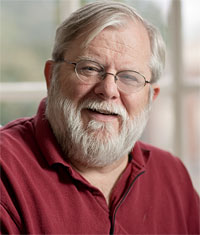
In an earlier, pre-January 20th essay, I suggested that the public wanted Barack Obama’s inaugural address to speak in the traditions of Martin Luther King Jr., John F. Kennedy and Franklin Delano Roosevelt. That was no small order: these men gave the three most significant American speeches in the 20th century. Those expectations, while rooted in admiration, were an unfair burden on the incoming president.
With a week to digest his remarks, what, in fact, did President Obama tell the nation and the world? How did his inaugural address compare to its venerable antecedents? What did the president do with his first opportunity in the “bully pulpit”?
Rhetorical criticism, the analysis of the persuasive use of language, is more art than science. As such, two critics can give very different interpretations of a speech and yet both readings may be useful criticism in that each sheds light on how the speaker sought to convey the message.
With that said, I would like to offer three observations of Obama’s speech: it was a statement most notable for its understatement; the central theme of the speech concerned a journey of renewal; and, finally, the performance was from the Hoosiers playbook not the NBA’s slam dunk contest.
The central fact of this speech to me was its rhetorical restraint. Obama’s campaign featured several magnificent speeches, delivered when he really needed them. The public’s trust in a relatively unknown United States Senator from Illinois grew with each speech as he described the country and his vision of it.
Nevertheless, the inaugural address was understated — powerful but without flourishes and sound bites. You have to conclude that Obama chose this deliberately restrained approach to the most important speech of his life. It makes you wonder what conditions he anticipates in the next four and eight years.
FDR’s first inaugural reminded Americans that we had “nothing to fear but fear itself.” Some expected a similar pep talk from Obama. Perhaps the new president recognized that FDR could decry “fear itself” because he was speaking to an America that had already weathered four years of the Great Depression and had rebuked Hoover for those problems. I suspect Obama sees soul-trying days ahead and wanted to match his tone to the impending challenges.
The theme of the speech, though it is conveyed very subtly, is America’s journey of renewal. Obama does not speak of “rebirth” per se but he approaches that term from several angles. For example, “We must . . . begin again the work of remaking America.” And, “We can meet those new threats that demand even greater effort.” Also, “For the world has changed, and we must change with it.” The sum of these and other statements is the notion that our own needs and those of the world require America to rise up to meet new needs and challenges.
Obama is clear that, in the face of all this change, we have the resources to succeed and these traits come from our heritage: “Earlier generations faced down fascism and communism.” And, “our security emanates from the justness of our cause.” Also, “It is ultimately the faith and determination of the American people upon which this nation relies.”
The one historic phrase Obama bids the audience revisit is not King’s “Dream,” JFK’s “Ask Not” or FDR’s “Fear Itself.” To show the power of committed citizens to make and remake the nation, he reaches back two centuries to a passage selected by George Washington though written by Thomas Paine in The Crisis. Paine observes that during the American Revolution citizens acted to save the nation “when nothing but hope and virtue could survive.”
President Obama enjoys basketball. The modern game is played with flash and style and much of the action occurs above the rim. However, this inaugural address is, in the vernacular, ”old school.” The best analogy is to the 1986 film, “Hoosiers” which depicts a 1950’s small town high school (cinematically “Hickory,” actually Milan, Indiana) playing fundamental basketball with precision and ardor. Hickory bests all comers including sophisticated urban schools and wins the Indiana state basketball championship.
In that same spirit, the Obama inaugural address is a very old school message. It is replete with allusions to George Washington and Valley Forge, freedom, equality and opportunity, sweatshops, Gettysburg, earned greatness, and reforming bad habits. These are words and sentiments delivered by a former community organizer that could very easily have come from any number of conservatives. This inaugural address is a bedrock statement about America and its promise.
For all of its rootedness, however, it also suggests a recasting or renewal of national values with different emphases and premises. Like the Hickory team of Hoosiers, the style and tone of this inaugural are fundamental but the goal is still to win. The Obama inaugural address was not flashy and it did not offer memorable sound bites but it did make some serious arguments about the meaning and direction of America. Those arguments will be tested in congressional hearings and on-line chat rooms over the next four years.
Perhaps the most telling feature of Obama’s inaugural address, and a powerful measure of its political reach, is the fact that 1.8 million people braved freezing temperatures to hear it in person. The previous record was a crowd of 1.2 million for Lyndon Johnson’s 1965 inauguration.
John Llewellyn joined the Wake Forest faculty in 1990 and teaches courses on rhetoric and organizational communication.
Categories: Uncategorized
Headlines
Wake Forest in the News
Wake Forest regularly appears in media outlets around the world.




